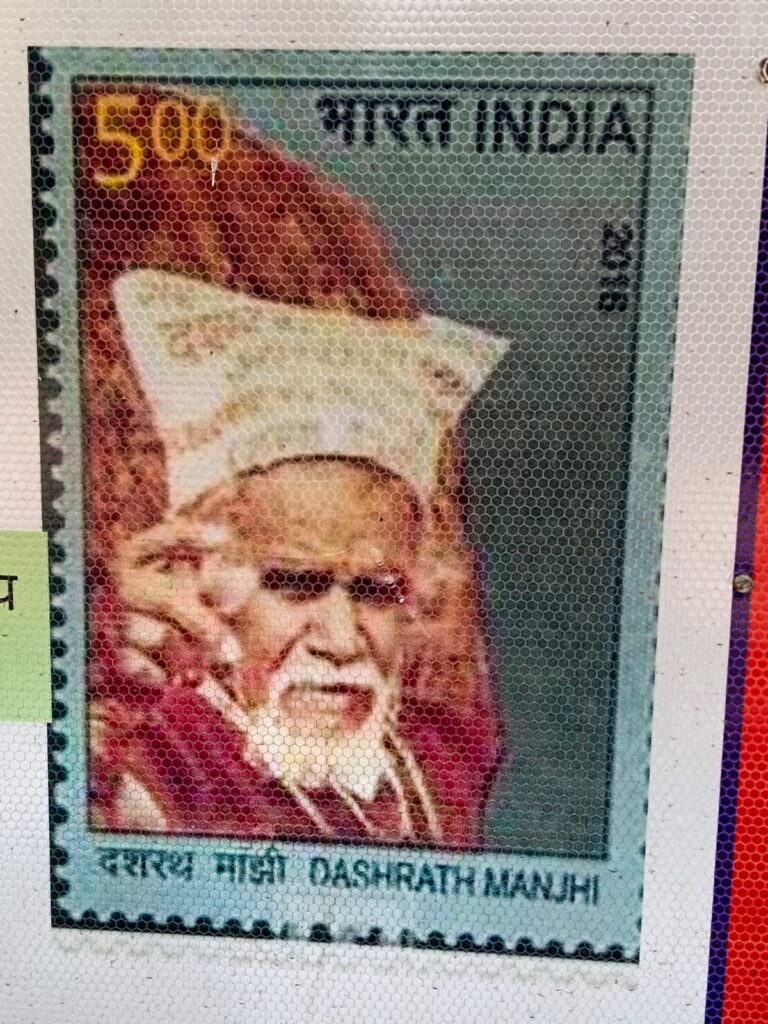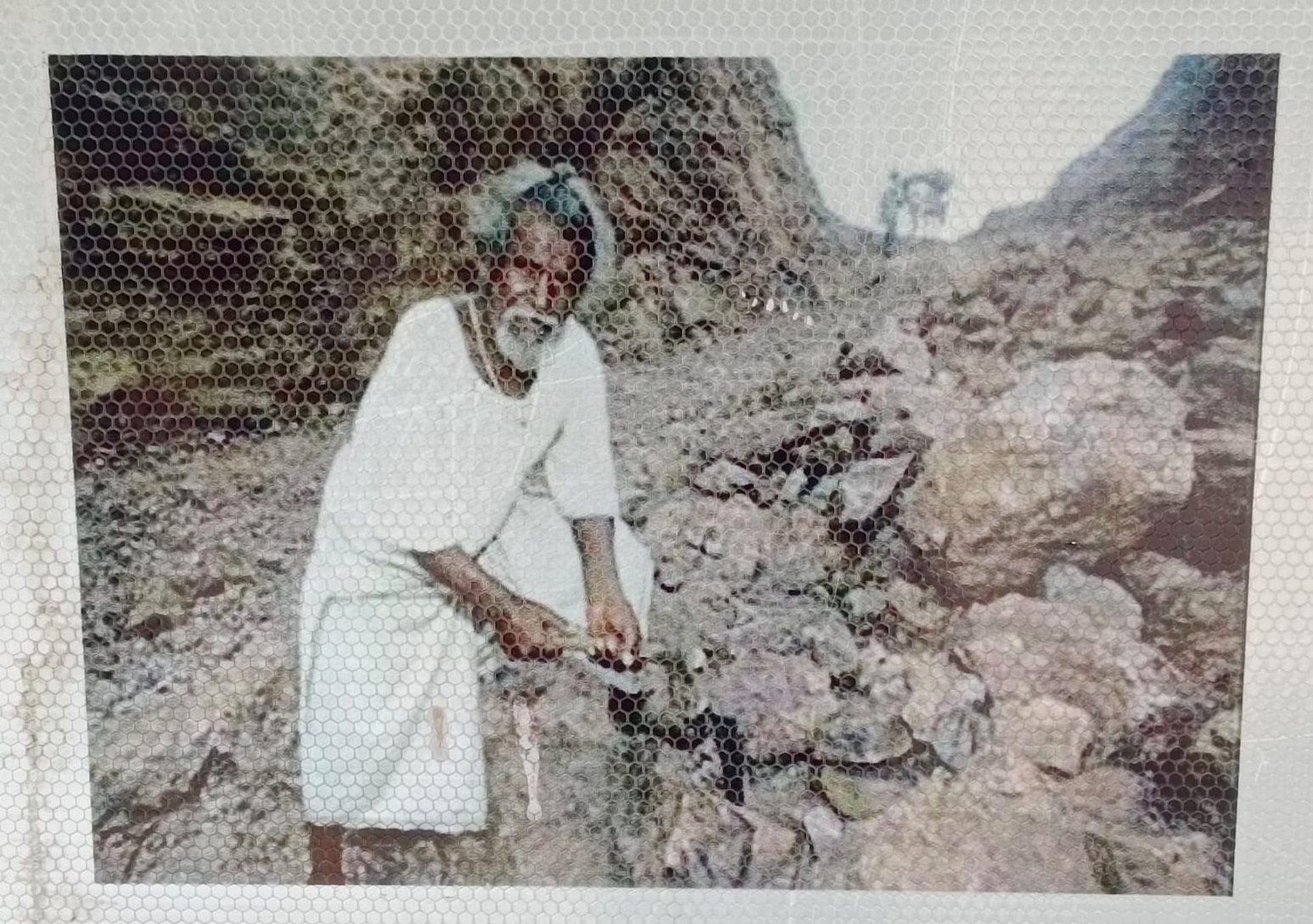Kindly consider these three facts, also try to imagine the real life situations based on these
- At the age of 26 a youth from the poorest landless community took it upon himself to do the impossible task of breaking a huge mountain to the extent of carving out a life-saving path that thousands of villagers needed urgently.
- He toiled tirelessly for 22 years, yes 22 (1960-82), no less, and finally succeeded in his objective.
- Acclaim followed, but instead of just basking in glory he undertook an 800 km journey on foot to Delhi to mobilise efforts for resolving various problems of his village ad nearby areas.
This brief summary of the work of Dashrath Manjhi, also called the Mountain Man, may give an indication of his deep determination and social commitment which won admiration at the highest levels in India, but by itself this does not do full justice to the nobility of his ideas and life, as this writer discovered during a recent visit to his village and work-area in Gaya district of Bihar.
I located elderly persons who had known him and seen him at work, and the picture that emerged from these discussions is that he was a follower of Sant Kabir, the bhakti movement’s famous poet-saint of medieval times, who has remained one of the strongest and most revered voices since then of spirituality based on justice, truth, non-violence, being helpful to others and leading a simple and pious life free from all hypocrisy and falsehoods. Sant Kabir remained true to his principles, convictions and truth in the middle of many difficulties, attacks and threats. His poetry and teachings inspire his followers to continue their noble work even in the middle of other people discouraging or even ridiculing them, and to maintain the steadfastness and continuity of their work and mission in the middle of all the ups and downs.
All this this can be seen in the life and work of Dashrath Manjhi. Born in 1934, he lived in Gehlaur village of Mohra block. As Satyanarain, who had known Dashrath well, told me–Dashrath was very polite to others but at times when needed he could tell some bitter truths of life without being rude. People from the manjhi community to when I spoke, said that whenever they went to mountains they found him at work just carrying some sattu in his jhola (bag), a legume based powder which could give some energy and coolness when taken mixed with water, something he would have really needed while working in the mountains here which can become very hot in the summer.
In 1960 Dashrath had gone to work on the mountain and his wife Phalguni Devi injured herself badly while carrying food and water for him. Looking at her injuries, he took a pledge to create a path in the mountain that may become a life-saver for many people. This would give a safe path to everyone going to the other side, and in addition would bring much closer the health, educational and other facilities of the nearest town to the people on this side of the mountain (the distance could come down from about 55 km to just about 15 km or so).

Contrary to some publicised accounts, several villagers told me that Phalguni Devi did not die from these injuries but instead continued to be very helpful to her husband and the pledge he had taken. She died some years later.
Using the simplest tools like hammer and chisel, Dashrath embarked on his great journey that was to be completed in 22 years. Initially people ridiculed him and some even called him ‘mad’ to take up such a huge task and to work so devotedly for this. Undaunted, Dashrath continued this work on regular, daily basis.
Here we must not forget that he came from the poorest community, called mahadalit in Bihar, and had to also earn his livelihood to support his four member family (which included a son and a daughter).
Initially most villagers had ridiculed or neglected Dashrath, but once his work of a few years started showing some signs of leading to success, some villagers also started lending a helping hand now and then.
Finally in 1982 Dashrath succeeded in creating a path which was wide enough for a bullock-cart to pass. Later the government helped to widen this and build a proper road.
Dashrath now decided to go and meet big government officials in Delhi to take up several development works much needed by his village and neighbouring communities. Education and health were emphasized by him.
However as he could not buy a rail ticket he was asked to get down from the train after covering a short distance. He now decided to walk to Delhi along the railway track, hoping that this would perhaps draw even more attention to his objectives of promoting development work in his village and neighbouring villages.
An elderly farmer of a neighbouring village told me that Dashrath had managed to meet the then Prime Minister Mrs. Indira Gandhi and had shared with him a press clipping of this.
Later Dashrath also went to meet the Chief Minister of Bihar Mr. Nitish Kumar who gave him a lot of respect.
However at the time of his increasing fame, Dashrath retained his simplicity. A local teacher Virendra Paswan told me that when he was in a train word spread that Dashrath Manjhi is in the same coach and there was a rush of people just to catch a glimpse of Dashrath. However, Paswan said, even at that time Dashrath was wearing dress made from a jute sack, as he often did earlier too.
In 2007 Dashrath was admitted to AIIMS hospital in Delhi where he breathed his last on August 17. A memorial as well as gates were constructed in his village in his honour.
At the same time, however, the people of the Manjhi community and other landless and poorest Dalit community members continue to live in this village in great poverty and several of them told me that even their housing situation is precarious. The government needs to do much more to help them with a sense of urgency.
Meanwhile the SBI Foundation has taken up an admirable initiative called SAMMAAN with implementation assistance of Sahbhagi Shikshan Kendra to honour the memory of Dashrath Manjhi in the form of many-sided efforts in his village to improve education, health, infrastructure and livelihoods that have been widely appreciated here.
The writer is Honorary Convener, Campaign to Save Earth Now. His recent books include Protecting Earth for Children, Planet in Peril, Man over Machine and A Day in 2071.
